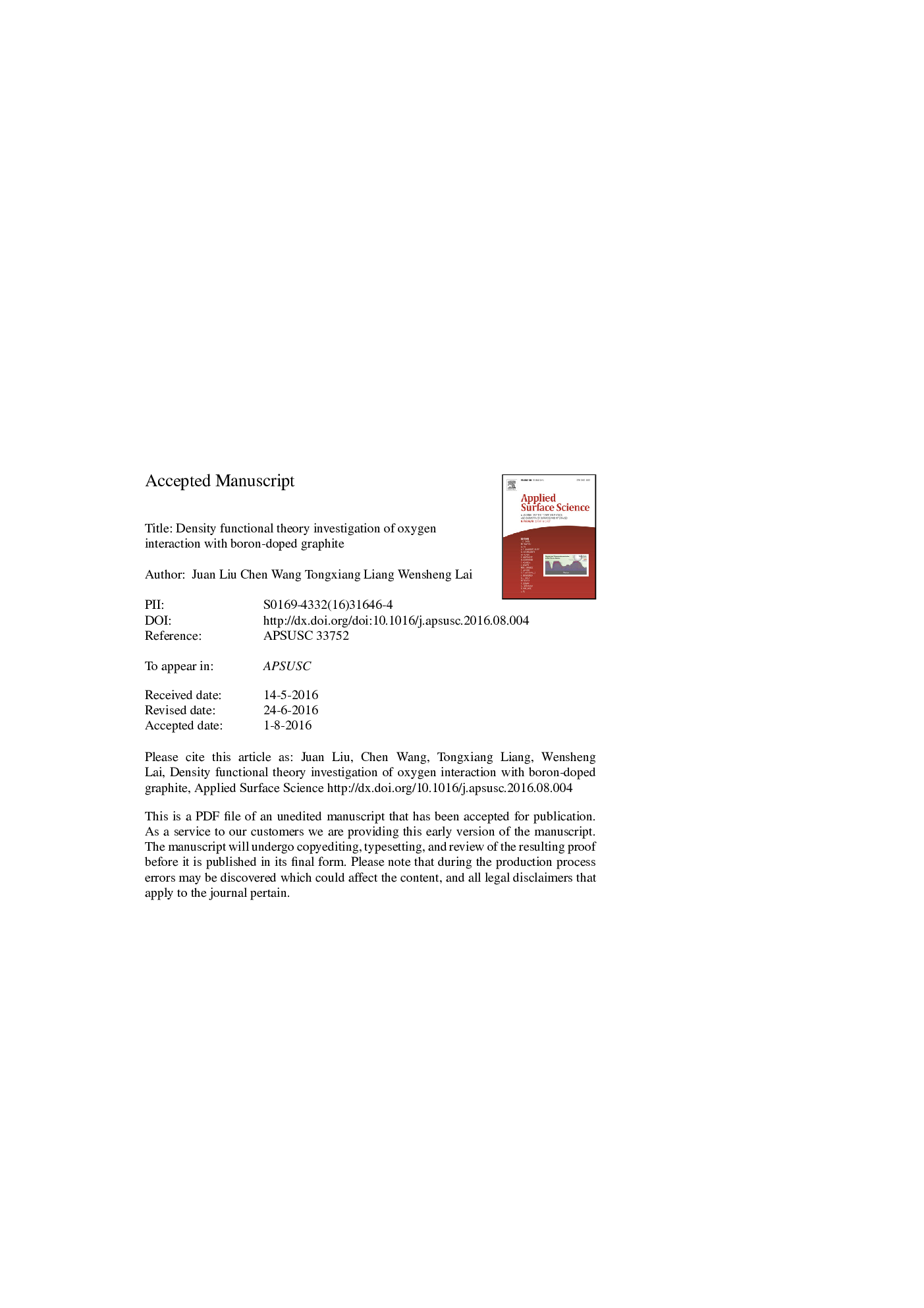| Article ID | Journal | Published Year | Pages | File Type |
|---|---|---|---|---|
| 5355347 | Applied Surface Science | 2016 | 34 Pages |
Abstract
Boron inserted as impurity by substitution of carbon atoms in graphite is known to change (improve or deteriorate) oxidation resistance of nuclear graphite, but the reason for both catalytic and inhibiting oxidation is still uncertain. As a first step, this work is more specially devoted to the adsorption and diffusion of oxygen atoms on the surface and related to the problem of oxygen retention on the pure and boron-containing graphite surfaces. Adsorption energies and energy barriers associated to the diffusion for molecular oxygen recombination are calculated in the density functional theory framework. The existence of boron modifies the electronic structure of the surface, which results in an increase of the adsorption energy for O. However, low boron loading makes it easier for the recombination into molecular oxygen. For high boron concentration, it induces a better O retention capability in graphite because the presence of B-B bonds decreases recombination of the adsorbed oxygen atoms. A possible explanation for both catalytic and inhibiting effects of boron in graphite is proposed.
Related Topics
Physical Sciences and Engineering
Chemistry
Physical and Theoretical Chemistry
Authors
Juan Liu, Chen Wang, Tongxiang Liang, Wensheng Lai,
